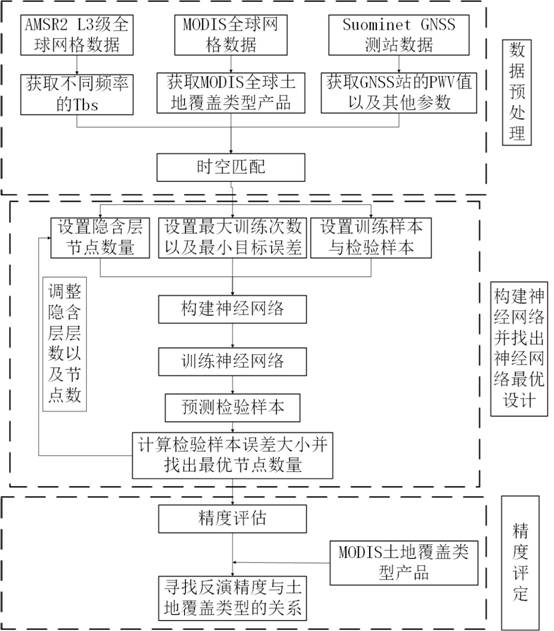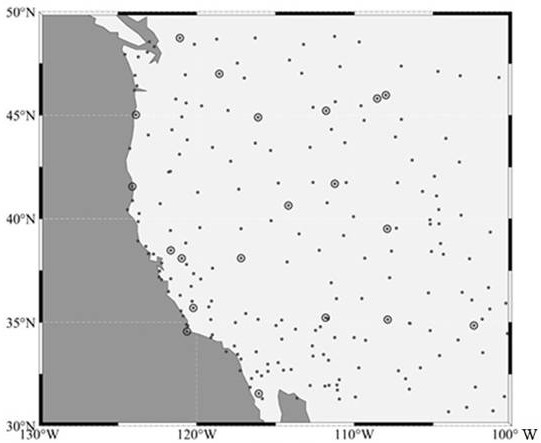Space inversion method and system for space-borne remote sensing water vapor based on neural network
A neural network and water vapor technology, which is applied in the field of space inversion methods and systems for spaceborne remote sensing water vapor, can solve the problems of not expanding the space domain, unable to use the neural network algorithm PWV inversion, reducing the spatial versatility of the algorithm, etc., to improve the accuracy. Effect
- Summary
- Abstract
- Description
- Claims
- Application Information
AI Technical Summary
Problems solved by technology
Method used
Image
Examples
Embodiment 1
[0046]The purpose of this embodiment is to provide a neural network-based space-based remote sensing water vapor space inversion method.
[0047] A neural network-based space-borne remote sensing water vapor space retrieval method, comprising:
[0048] Obtain space-based remote sensing observation data, land cover type data and ground-based GNSS water vapor observation data;
[0049] Based on the linear interpolation algorithm, the three types of data obtained are matched in time and space globally to obtain matching data on a global scale;
[0050] Based on the location information of the area to be retrieved by water vapor and the matching data in the global scope, determine the matching data corresponding to the current location information;
[0051] The location information and its corresponding matching data are input into the pre-trained deep learning model, and the water vapor inversion result of the area to be inversed by water vapor is output.
[0052] Further, the ...
Embodiment 2
[0086] The purpose of this embodiment is to provide a neural network-based space-borne remote sensing water vapor space inversion system.
[0087] A neural network-based space-borne remote sensing water vapor space inversion system, including:
[0088] A data acquisition unit, which is used to acquire space-based remote sensing observation data, land cover type data and ground-based GNSS water vapor observation data;
[0089] A space-time matching unit, which is used to perform space-time matching on the three types of data obtained globally based on a linear interpolation algorithm to obtain matching data on a global scale;
[0090] A water vapor inversion unit, which is used to determine the matching data corresponding to the current position information based on the position information of the area to be water vapor inversion and the matching data in the global range; input the position information and the corresponding matching data into the pre-training The deep learning...
PUM
 Login to View More
Login to View More Abstract
Description
Claims
Application Information
 Login to View More
Login to View More - R&D
- Intellectual Property
- Life Sciences
- Materials
- Tech Scout
- Unparalleled Data Quality
- Higher Quality Content
- 60% Fewer Hallucinations
Browse by: Latest US Patents, China's latest patents, Technical Efficacy Thesaurus, Application Domain, Technology Topic, Popular Technical Reports.
© 2025 PatSnap. All rights reserved.Legal|Privacy policy|Modern Slavery Act Transparency Statement|Sitemap|About US| Contact US: help@patsnap.com



